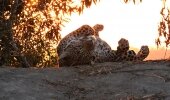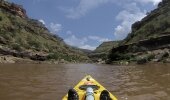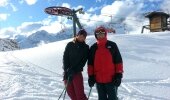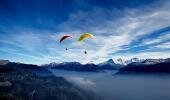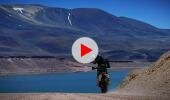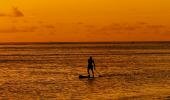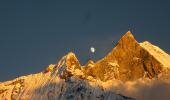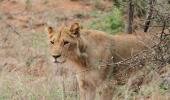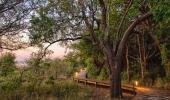Words: Francois Flamengo ǀ Photos & Video: DO IT NOW Media
Travel Africa. It must rate high on any adventurer’s bucket list of things to do, as there is something about the unknown that simply can’t be quenched until you have tried it for yourself.
And although you can plan many things, be assured there will always be an element of surprise that you will have to deal with when the moment arises. Elri, Mari, Rudi, and I knew our 11-day trip to Zimbabwe, Mozambique, and Malawi would be no different and that we'd have to cope with whatever Africa threw our way.
Our plan was to drive through Zimbabwe, via Harare (the shortest route) in one day, sleep over in Tete (Mozambique), then continue to Cape MaClear (Malawi), the most northern part of our trip, and spend the next four nights on the exquisite Mambo Island. We would then return via Tete, stay for two nights at the Ugezi River Lodge (100 km from Tete), and go back through Zimbabwe, with a two-night stopover in Chishakwe Lodge before heading back into South Africa. On paper, it looked pretty simple and straight forward, and we concluded that with such thorough planning and accommodation arranged, we wouldn’t need any camping equipment, except maybe a sleeping bag and pillow each. How wrong we were.
With the FJ Cruiser and Hilux gassed and packed, we were ready to set forth into Africa and left Johannesburg in the still of night. We arrived at Beitbridge early on Saturday morning, and although we'd heard horror stories about this, the busiest border post in southern Africa, we thought, "How bad can it really be?" The shortest alternative was to drive an additional 500 km and enter Mozambique, but we were keen to stick to our carefully laid-out plans.
On the South African side of the border, we were enthusiastically greeted by many people who wanted to help us and make our journey easier. For a nominal fee, they will show you how to pass through all the border control areas and make your way into Zimbabwe as quickly and painlessly as possible. Chaos surrounded us, so we gladly accepted their help and were through the border in around 20 minutes. We were off to a great start.
The Zim side was, however, not as pleasant or friendly. Unhelpful and hostile faces stared at us and it took three hours to clear all the border control areas - and that was only after paying some questionable 'African taxes'. My advice to first-time travellers is to either avoid this border or go with someone who knows it well.
Leaving the border, we turned onto the A4 and headed north towards Harare. I was pleasantly surprised by the colourful African bushveld that decorated the horizon, and the entire trip through Zimbabwe was the same. There are massive baobab trees everywhere you look and these majestic, gentle giants tower over the plains like sentries guarding their land. Although the scenery can be very distracting, just one word of advice when travelling on the main roads though: carefully monitor your speed and double check for speed limit signs, especially before and after towns and villages. If you are caught by traffic officers, the chances are good that it will be a long and uncomfortable process before you are able to continue your journey.
Due to all the hassles at the border post and with so many traffic control areas (we counted about 15 road block/stop-and-go stations) on the main roads, we decided to alter our route and headed towards another smaller border post that we could see on the GPS, following a quieter road, the A10, via Chiredzi to enter Mozambique. We knew this would add time to our drive, but all agreed that fewer traffic control areas and a smaller border post were the preferred option. So, on the road less travelled and fuelled with the need for adventure, we took a chance.
The road was not bad, but we were now faced with the dilemma of making it to the border post at the Haroni Forest Reserve before it closed. If we were too late, it would mean being stuck in Zimbabwe for an unplanned night in what looked like a very rural area. Time was running out and as we got closer to the border, the road from Chipinge got smaller and smaller until it was but a winding, dirt road, with a small strip of tar in the middle. It became a game of chicken to see which vehicle would get to the tar first, a much smoother alternative to the bumpy gravel road.
Despite the poor gravel road, the last few kilometres to the border were incredibly beautiful, with huge trees lining the road. As much as we would have loved to stop and explore more of this reserve, we had to keep going because no one was able to tell us what the border's operating hours were. We were hoping for 6 p.m., or later. We finally reached the border post, a small building with a lovely view and two friendly officials, at 5:30 p.m. and just 30 minutes to spare. We all agreed this was one stopover we'd add to our itinerary on a return visit to the area.
Whizzing through this small and friendly border post, we entered Mozambique. At this late stage though, we knew we wouldn't be able to reach our accommodation in Tete before morning. Our best option was to continue driving as far as possible during the night, sleep 'somewhere' for an hour or two, and then keep going if we were going to catch the boat to Mumbo Island, which left at 5 p.m the following day.
With this plan in mind, we set off towards Dombe, 80km away. Thanks to the incredible Light Force HID spots fitted to the FJ by ONCA Off-road Products, we were able to continue driving in the black of night. However, it still took us more than two hours to reach Dombe because of road works and 'fesh-fesh' type of dust (common to the Dakar) that blanketed the road and reduced visibility to almost nothing.
It was now almost 10 p.m. and we'd been taking turns driving since 5 a.m. Luckily for us, the road was nice and wide and tarred, which allowed us to travel at a more respectable speed. We all agreed that we needed a rest, so we stopped in Inchope, about 100 km north on the EN1. Inchope is not a massive town and as we drove around, looking for somewhere to rest, the only option appeared to be a gas station a gas station just before Inchope, where many truck drivers were also resting. We decided to park and sleep for two hours before continuing on to Tete early the next morning. Using our reflector jackets to block out the gas station’s lights, we tried to find a comfortable spot in the car so that we could get on with the business of having a power nap. When you are that tired, it does not take long and before you could say good night, everyone was lights out.
The buzzing of the alarm woke us and with everyone looking 'wonderfully refreshed', we set off once more. The plan was to stop every 100 km and change drivers, thus enabling us get some more much-needed sleep while on the move. The Zartek handheld radios in both vehicles made communication easy and allowed the drivers to keep each other company.
We reached Tete at 7 a.m. and headed straight to the hotel we had booked (with check-in the night before), in the hope that they would still let us check in and have a hot shower and something to eat before continuing on to Malawi a few hours later. Thankfully, the friendly staff at Park Inn Radisson Hotel were only to happy to accommodate us. After our quick and heavenly 'pit stop' and some breakfast, everyone looked, smelled, and felt much better and ready to tackle the next part of the trip. The Garmin showed it was only 100 km to the Malawi border and that we were ahead of schedule to catch the boat that left at 5 p.m. for Mumbo Island.
The road dished up some entertaining challenges, as it was littered with massive potholes, some of the worst we’ve ever seen. Elri even commented that I looked like I was playing a video game as I tried to navigate the FJ through the best lines. I am very impressed with the FJ and its extreme resilience to hostile terrain, and there were many occasions when I thought, "Man, I’m so happy we are in a capable vehicle." Behind us, the diesel Hilux was also living up to its rugged reputation. After the fun and games, we reached the border two hours later, only to encounter some hassles on the Malawian side with our car insurance. The issue was not getting it; it was the price they wanted us to pay. After some negotiation, and another two hours, we finally proceeded into Malawi.
The road ahead looked fantastic; no potholes or any visible obstacles in sight, but what was surprising was the amount of pedestrians, cyclists, and animals on the road. Even though we encountered many pedestrians in Mozambique and Zimbabwe, they were further away from the road and there were hardly any cyclists. Here, it looked like everybody was 'travelling' somewhere and as a result, we couldn’t go much faster than 80 km/h. With just one hour to make the boat and 100 km still to go, we were cutting it very fine. Getting nowhere slowly, I decided to hook in behind one of the local vehicles that passed us at a 'brisk' pace and thought, "Well, they obviously know the roads better than us." It was now time for what monkey see, monkey do ;-).
We arrived at Africa Kayak Lodge's front gate at 5 p.m., extremely relieved to have made it just in time, and boarded the boat. As the main land slowly disappeared from sight and the sunset over Lake Malawi, it was cheers all round with cold Carlsberg Danish to having survived the last two crazy days of travelling and the four exquisite nights on Mumbo Island that awaited us. We were so ready for this!
Having made it to Mumbo island, in my next article (Click here to read), I will share our fantastic time on Mumbo island, spent exploring the island, and snorkelling, paddling, and scuba diving, in the wondrous Lake Malawi. My third article is about the final leg of our African adventure, exploring Cahora Bassa Dam and once again unplanned and looong way back home.
Travel tips:
• Make sure you have enough cash because not all countries take ZAR, and change some into the local currency (check exchange rates).
• We really struggled to find operational ATMs and if we did find one, it rarely accepted our cards. Master card worked only once and we had to rely on Visa to keep us going.
• Taking extra petrol and diesel with you is a must because many of the filling stations are closed or not operational. We actually came across many new filling stations, so when they are operational, it will make a big difference to the overall travelling experience.
• If there’s only one thing to plan for and be as knowledgeable as possible about on your trip in Africa, it’s border posts. You will be able to work around most other things.
Border post tips:
• Check if borders are operational and what their operating hours are beforehand.
• Make sure you know exactly what each border is supposed to cost you. This might not be what you pay, but it will give you some indication as to what to expect.
• If possible, have proof of the rates, for example, a printed copy from the country’s official website.
• Avoid engaging with any locals who want to assist you and rather go straight to any officials standing around and ask them the necessary questions.
• Never hand your passport over to anyone except a border official.
• Have the country’s currency on hand, as this makes payment a lot easier.
• Know what insurance documents are compulsory and make sure you have them. Be aware that this might differ if you are not the owner or if it’s a company vehicle.
